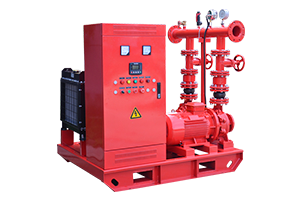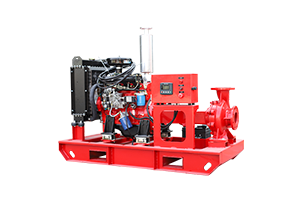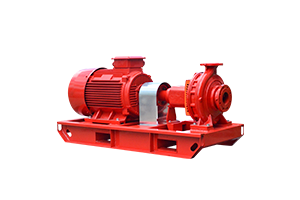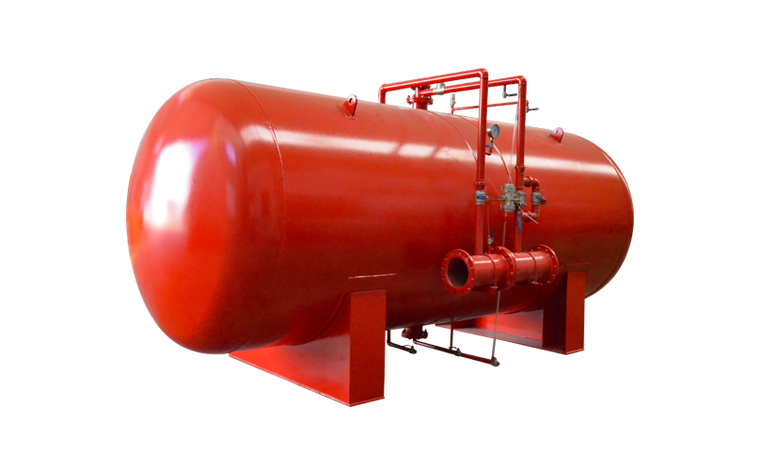-
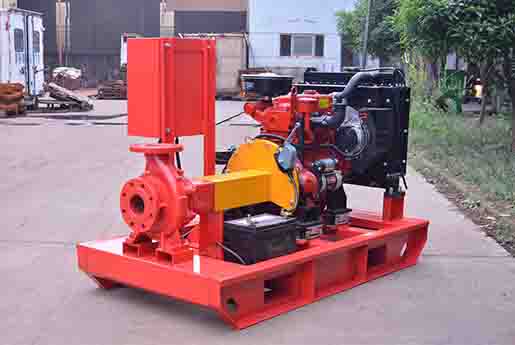 Jan 12, 2023How to install a diesel fire pump is more appropriate?How to install a diesel fire pump is more appropriate?
Jan 12, 2023How to install a diesel fire pump is more appropriate?How to install a diesel fire pump is more appropriate?
zjbetter engaged in the design, production and sales of fire pumps for more than a decade, during the service of a variety of companies, enterprises in all walks of life, especially like steel plants, chemical plants, or like hotels, hospitals, such high-rise building projects have been water supply projects, accumulated some experience details, today here to share with you.
That is the installation of diesel engine fire pumps. To run your equipment high efficiency but also save energy, the design and quality of the product itself is very important we all know by heart, but in fact there is an important factor is often easy to ignore, where the diesel engine installation is more appropriate. If the installation is not appropriate, the equipment in operation will be a major headache, vibration, noise, energy consumption, etc..
Diesel fire pumps are suitable for unattended emergency water supply fire fighting systems, with high automation, superior performance and complete protection functions. When a building or factory suddenly loses power and the electricity cannot be supplied, the diesel emergency water supply pump set can automatically start to supplement the pressure of the pipe network. So many customers in the purchase of fire pumps are to follow the principle of "one spare, one use", to electric fire pumps as the main, diesel fire pumps as a supplement. How to install a diesel fire pump?
Generally speaking, we recommend installing a diesel fire pump in a naturally ventilated place, with sufficient size of vents and exhausts, and with vents positioned to ensure sufficient fresh air supply for diesel combustion within the temperature limit. Of course it is also possible to use the water supply radiator to take away the heat from the circulating cooling water and to take away the heat emitted from the surface of the unit. If the space cannot meet the requirements of natural ventilation and cannot dissipate heat effectively, it is recommended that you adopt the method of forced ventilation by adding inlet fans and exhaust fans to the vents, the choice of which should be able to provide sufficient cool air for the diesel engine and at the same time take away the hot air in the engine room. Generally speaking, the air intake of the unit should be 6-7 times the air intake of the diesel engine, as long as this is the case, in order to ensure normal ventilation and improve the operating efficiency of the equipment.
There must also be fixed firmly, which can support the whole unit and ensure that the unit is in a horizontal state to absorb vibration. Generally speaking, the foundation of the unit is made of concrete structure, the length and width of which are 150-250mm on one side of the length and width dimensions of the chassis of the unit, and the depth is 300-600mm, and the height of the ground bolts extending out of the horizontal surface should be about 2 times of the diameter of the bolts. And there should be 750mm of access on both sides of the unit as well as in the front position for the operator's inspection and general maintenance.
The above is some of better's installation experience, I hope it can bring you some help, such as purchasing needs can be in the official website home page contact customer service consulting details.View details -
 Jan 10, 2023Customers from Singapore specially came to Zhejiang, China to purchase diesel engine fire pumps, and visited the better factory! !Diesel engine fire pump, as a large-flow water supply equipment for fire fighting in the new era, can be said to be gradually replacing ordinary fire pumps. No, this company from Singapore traveled thousands of miles to Quzhou to purchase high-quality diesel engine fire pumps.
Jan 10, 2023Customers from Singapore specially came to Zhejiang, China to purchase diesel engine fire pumps, and visited the better factory! !Diesel engine fire pump, as a large-flow water supply equipment for fire fighting in the new era, can be said to be gradually replacing ordinary fire pumps. No, this company from Singapore traveled thousands of miles to Quzhou to purchase high-quality diesel engine fire pumps.
Which diesel engine fire pump is better? Where can I buy a quality diesel fire pump? Speaking of it, the fire protection series products are actually indispensable safety equipment for every company, every community, and every department.
zjbetter received a call from Singapore. The caller was calling for the first time, and they were inquiring about diesel engine fire pumps. Unlike ordinary purchasing customers, although this customer does not work in the field of fire pumps, he has a good understanding of the performance of fire pumps. After careful communication It was found that the customer had done enough homework in order to find a high-quality diesel engine fire pump, and had contacted a number of diesel engine fire pump manufacturers earlier.View details -
 Jan 09, 2023Better Technology Group Zhejiang Motor Co., Ltd.Better Technology Group Zhejiang Motor Co., Ltd.(hereinafter referred to as Better Group Motor Co., Ltd.) is an entity enterprise established in 2004, specializing in motor design, research and development, manufacturing and service. It mainly produces TEFC/ODP (UL1004-5) fire pump motors, IE2/IE3/IE4 efficient motor, ExdIIBT4 GB explosion-proof motor, IP68 submersible motor, IP68 ExdIIBT4 GB explosion-proof pump, Y, YKK, Y2 series high-voltage motors, voltage class: 3-14KV。
Jan 09, 2023Better Technology Group Zhejiang Motor Co., Ltd.Better Technology Group Zhejiang Motor Co., Ltd.(hereinafter referred to as Better Group Motor Co., Ltd.) is an entity enterprise established in 2004, specializing in motor design, research and development, manufacturing and service. It mainly produces TEFC/ODP (UL1004-5) fire pump motors, IE2/IE3/IE4 efficient motor, ExdIIBT4 GB explosion-proof motor, IP68 submersible motor, IP68 ExdIIBT4 GB explosion-proof pump, Y, YKK, Y2 series high-voltage motors, voltage class: 3-14KV。
Better Group Motor Co., Ltd. won the UL Witness Laboratory (WTDP) certification granted by UL Company of the United States. (UL (Underwriters Laboratories Inc.) is an American product safety testing and certification agency and the founder of American product safety standards. The UL logo is a symbol of safety. In the world, UL is one of the most trusted third-party certification agencies for manufacturers.) The motor laboratory is equipped with a technologically advanced and self-developed motor testing energy feedback system and energy recovery system. The motor laboratory is also equipped with various necessary measuring instruments to meet the requirements of experiments under various voltages, frequencies and powers. All measuring instruments have been tested and calibrated by the national CNAS laboratory. The motor laboratory is also equipped with an efficient and sophisticated testing team.
The experimental items of UL Witness Motor Laboratory include: cold resistance, hot resistance, thermal test, load test, locked rotor test, M-S test (T-n test), noise test, vibration test, insulation resistance test, power frequency withstand voltage test, etc. The motor capacity index data output includes efficiency, power factor, maximum torque multiple, minimum torque multiple, locked rotor torque multiple and locked rotor current multiple. The maximum power of motor test is 500hp, the voltage is 100~690V, the test capacity is 50/60Hz, and the number of motor poles is 2~12P.
Better Group Motor Co., Ltd. won the Witness Laboratory Certificate issued by UL of the United States, which will further improve the motor research and development, testing capabilities and technical level. After winning the UL witness laboratory certification, Better Group Motor Company can complete the UL certification project test by itself, greatly improving the progress of motor product listing, and providing strong support and guarantee for the development of Better Group Motor Company.
Better Group Motor Co., Ltd. has obtained the product certification of TEFC-IEC (UL1004-5) fire pump motor. The product covers power of 15~500hp, voltage of 190~480V, frequency of 50/60Hz, and motor poles of 2~4P. There are 294 models in total, with installation methods of IMB3, IMB5, IMB35, protection grade of IP55, and cooling mode of IC411. Meet the current international market demand for low-voltage fire pump motors.
In recent years, driven by the national technological innovation reform, the company has continued to introduce new products and upgrade. The test items and methods of three-phase asynchronous motor in the motor laboratory meet the following standards.
1、UL1004-1 Rotating Electrical Machines – General Requirements
2、UL1004-5 Fire Pump Motors
3. GB 755-2019/IEC 60034-1:2017 Rotating Electrical Machines - Rating and Performance
4. GB/T 1032-2012 Test Methods for Three Phase Asynchronous Motors
5. GB14711-2013 Safety Requirements for Small and Medium Rotating Electrical Machines
6. GB12350 - 2016 Safety Requirements for Small Power Motors
Better Group Motor Co., Ltd. not only aims to provide the best motor products and motor technology solutions for global industrial enterprises and various application fields, but also is moving towards energy saving, high efficiency, environmental protection, integration, automation and internationalization, striving to make "Better Group Motor Company" the most respected supplier of motor technology solutions and motor manufacturer in the global motor industry, providing safety guarantee for domestic and foreign industries, Strive to provide customers with more excellent products and services!View details -
 Jan 06, 2023Description of the structure and installation of fire pumps1, Vertical fire pump, multi-stage sectional structure. The pump inlet and outlet flanges are in the same straight line, the impeller is hydrodynamically balanced, axial force, a guide bearing at the lower end of the pump. The shaft is fixed to the motor shaft by means of a clamping coupling. The outer cylinder is a stainless steel cylinder.
Jan 06, 2023Description of the structure and installation of fire pumps1, Vertical fire pump, multi-stage sectional structure. The pump inlet and outlet flanges are in the same straight line, the impeller is hydrodynamically balanced, axial force, a guide bearing at the lower end of the pump. The shaft is fixed to the motor shaft by means of a clamping coupling. The outer cylinder is a stainless steel cylinder.
2, The shaft seal is mechanically sealed.
3, The pump is driven by the motor and rotates in a clockwise direction when viewed from the motor end.
4, The pump outlet is equipped with an exhaust valve (air nozzle), which can ensure that the gas in the pump can be completely exhausted.
5, The impeller can be made of bronze. Avoid rusting between the impeller and the guide vane after long-term shutdown.
I. Installation instructions
1. The weight of the pipeline should not be borne on the pump, otherwise the pump will be easily damaged.
2. The pump and motor are of integral structure. The pump and the motor are an integral structure. It is calibrated by the manufacturer at the time of shipment, so there is no need to adjust the contract when installing it. This makes installation very easy.
3. The foot bolt must be tightened during installation. The pump should be inspected at regular intervals to prevent it from loosening. To prevent the pump from vibrating violently when starting up and affecting the performance of the pump.
4. Before installing the pump, check carefully whether there are any hard objects (such as stones, iron sand, etc.) in the flow channel of the pump that may affect the operation of the pump, so as to avoid damaging the overflow parts when the pump is in operation.
5. For easy maintenance and safety in use. Install a regulating valve on the pump's throttle and a pressure gauge near the pump's throttle, and for high head pumps. To prevent water hammer. A check valve should also be installed in front of the outlet gate valve to cope with sudden power failure and other loss of power accidents, thus ensuring that the pump operates under suitable working conditions and increasing the service life of the pump.
6. The pump is used in suction range situations. It should be equipped with a bottom valve, and the pipeline should not have too many bends in the mouth of the flume, and there should be no water leakage or air leakage in the same inch. To avoid affecting the suction performance of the pump.
7, in order not to make impurities burst into the pump and block the flow channel to affect the performance. A filter should be installed in front of the pump's flume.
8, the installation of pipeline bary for the rotation of the pump rotor parts, should be no grinding sound or jamming phenomenon, otherwise the pump should be disassembled to check the reasons.
View details -
 Jan 05, 2023ZJBETTER obtained another certificate at the end of the year: "UL Witnessed Test Laboratory" certificateZJBETTER obtained another certificate at the end of the year: "UL Witnessed Test Laboratory" certificate
Jan 05, 2023ZJBETTER obtained another certificate at the end of the year: "UL Witnessed Test Laboratory" certificateZJBETTER obtained another certificate at the end of the year: "UL Witnessed Test Laboratory" certificate
At the end of 2022, UNDERWRITERS LABORATORIES INC., the global leader in safety product testing and certification, awarded the "UL Witness Test Data Program (Witness Test Data Program, WTDP)" certificate.
As a global independent safety science company, UL has international advanced technology and resource advantages in the field of testing, certification and standard development. As an industry expert in global market compliance solutions, since entering China in 1980, it has always been committed to serving the local area with international advanced technology and experience, providing one-stop integrated services such as localized testing, certification, inspection, and training. The "UL Witnessed Test Laboratory" is a relatively flexible certification method provided by UL for manufacturers. Passing the UL witness test audit means that in an accredited laboratory, with the witness of UL engineering personnel, Accreditation of project testing improves product certification efficiency.
BETTER TECHNOLOGY GROUP (ZHEJIANG) MOTOR CO LTD is currently equipped with domestic first-class motor laboratory resources and testing teams. In recent years, under the impetus of national technological innovation and reform, the company has continued to introduce new products and encourage product upgrades on the basis of maximizing product quality and safety compliance. The experimental items and methods of the three-phase asynchronous motor in the motor laboratory all meet the following standards.
1. UL1004-1 Rotating Electrical Machines – General Requirements
2. UL1004-5 Fire Pump Motors
3. GB 755-2019/IEC 60034-1:2017 "Rating and Performance of Rotating Electric Machines"
4. GB/T 1032-2012 "Test methods for three-phase asynchronous motors"
5. GB14711-2013 "Safety Requirements for Small and Medium-sized Rotating Electric Machines"
6. GB12350-2016 "Safety Requirements for Small Power Motors"
The test items that can be tested in the UL witness motor laboratory include: cold resistance, hot resistance, heat test, load test, locked rotor test, M-S test (T-n test), noise test, vibration test, insulation resistance test, power frequency withstand voltage test Wait. The motor power index data output is efficiency, power factor, maximum torque multiple, minimum torque multiple, locked rotor torque multiple, and locked rotor current multiple. The maximum power of the motor experiment is 355kW, the motor frequency is 50/60Hz, the motor voltage is 100-690V, and the number of motor poles is 2-12P.
The award of the WTDP laboratory certificate will further provide BETTER TECHNOLOGY GROUP (ZHEJIANG) MOTOR CO LTD with services in product safety testing and technical guidance. After obtaining the UL witness laboratory certification, the company will be able to complete the UL certification project by itself. The test has greatly promoted the progress of the launch of motor products, provided strong support and guarantee for the development of BETTER TECHNOLOGY GROUP (ZHEJIANG) MOTOR CO LTD, and strengthened the leading position of BETTER TECHNOLOGY GROUP (ZHEJIANG) MOTOR CO LTD in the vertical field of motors.View details -
 Jan 03, 2023What are the key points of fire pump acceptance?What are the key points of fire pump acceptance?
Jan 03, 2023What are the key points of fire pump acceptance?What are the key points of fire pump acceptance?
1. The total number of probes, buttons and modules on the main unit, whether domestic or imported, cannot exceed 3200 points. If this number exceeds this number, the main unit should be added.
2. Water pumps and fans are not allowed to start with frequency conversion, they must be started directly in one step, and frequency converters are not allowed in the control cabinet.
3. The number of loops is not allowed to exceed 200. If this number is exceeded, additional loops will be added. And an isolator should be added to the circuit, and an isolator can only have 32 points.
4. Modules are not allowed to be installed in strong current distribution cabinets (boxes), but should be installed in special module boxes.
5. In a building, no matter how many sound and light alarms there are, no matter how many broadcasts there are, all of them should be activated in case of fire, and every part and every corner should be aware of the fire at the same time for quick evacuation.
6. No matter how far the fire pump is linked with the 24V power supply, the voltage should not be lower than 22.8V when measured with a multimeter on site. If it is lower than this number, an additional 24V power supply should be added on site.
7. Construction personnel, when wearing 24V power lines in the future, they should wear fire-resistant copper core wires, which are the lines starting with NH, and the cross-section is not less than 1.5 square meters. The signal line can reduce the requirements. Use flame-retardant type, which is the line starting with ZR .
8. In the event of a fire, ordinary power, escalators, sewage pumps, recreational facilities, kitchen electricity, etc. should be cut off immediately; other normal lighting, domestic water pumps, security systems, passenger elevators, etc. should be cut off later or selectively cut off manually , to facilitate the evacuation of personnel.
9. When the manufacturer compiles the linkage relationship, one probe should not be used to link the fire pump facilities, but any two probes in the area or any probe plus any manual should be used to start the linkage.
10. In future residential buildings, 1.3 to 1.5 of the entrance of the residents should be equipped with an independent household alarm system, and smoke detectors and combustible gas detectors should be installed in bedrooms and kitchens.View details

